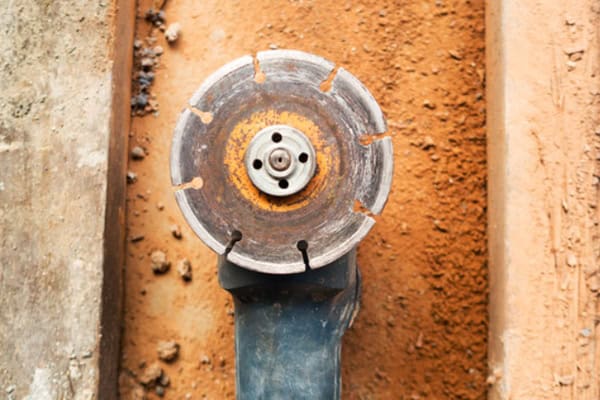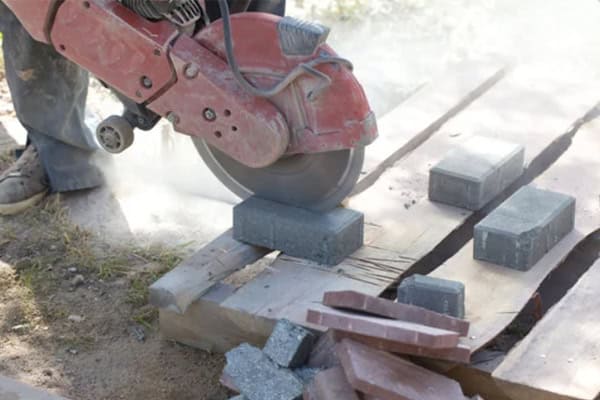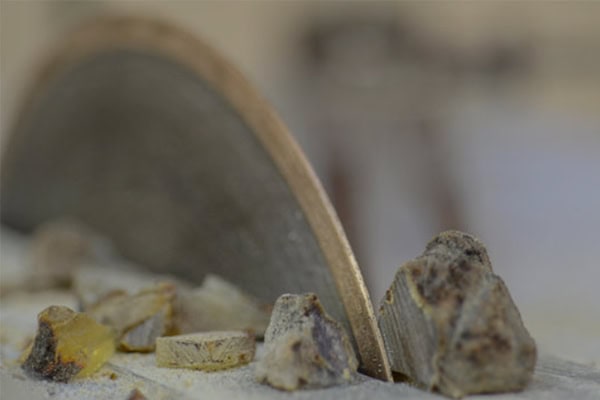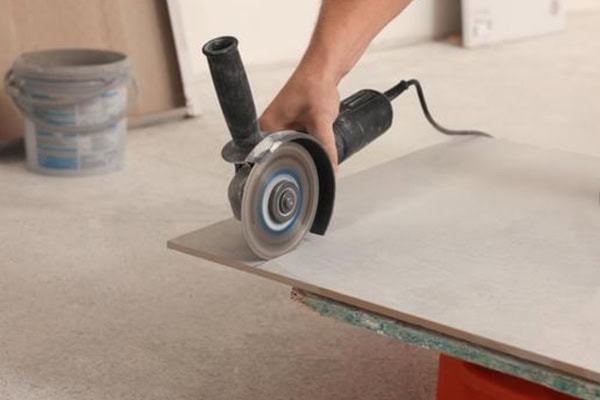
When you think about cutting materials like stone or tile, the choice of the right blade makes all the difference. I know, I’ve been there—standing in the aisle, staring at a shelf full of options and wondering which one will actually get the job done right. In particular, diamond blades are often the go-to for these tasks, but there’s always a question: segmented or continuous?
These two types of blades, while similar, serve distinct purposes and cater to different types of materials. Each has its own advantages, and choosing between them can be like trying to decide if you need a sledgehammer or a scalpel—it all depends on the job at hand.
In this article, I’m going to guide you through everything you need to know about segmented diamond blades und continuous rim diamond blades. I’ll discuss which blades work best for which materials, like stone and porcelain tiles, and help you understand why choosing the right one can save you time, money, and a whole lot of frustration. Let’s dive in, starting with the basics.
Choosing the right diamond blade is essential for cutting materials like stone and porcelain. Segmented blades excel at tough, rough cuts in stone, concrete, and bricks, offering speed and durability. In contrast, continuous rim blades provide smooth, precise cuts for delicate tiles and ceramics, minimizing chipping.
Segmented diamond blades feature a segmented edge that helps remove debris, which keeps the blade cool and makes for fast, rough cuts. On the other hand, continuous rim diamond blades are ideal for delicate materials like tiles, ceramic, or porcelain.
So how do you know which one to choose? It comes down to understanding your project needs—are you after speed or precision?
Let’s break this down further so you can make the best choice for your next cutting project.
Uses of Segmented Diamond Blades?
Segmented diamond blades are the powerhouses of construction tools. They’re the ones I pick up when the job requires sheer power—especially for cutting through tough, heavy materials like stone or concrete. If you’re looking for something that eats through masonry or brick like a hot knife through butter, the segmented blade is your best friend.
Segmented Diamond Blades Use Cases:
These blades are designed to do the heavy lifting. Their slots or "gullets" are what give them the segmented appearance, and these segments are more than just aesthetic. They serve a functional purpose—they help the blade cool itself down1 and shed debris while cutting, allowing for faster cuts even in dry conditions.
Whether you’re slicing through a solid stone slab, making room for new brickwork, or cutting pavers for a garden pathway, these blades will get the job done efficiently. However, they do leave a rougher cut, which makes them less ideal for anything that requires a perfectly smooth finish.
But in terms of versatility? They’re at the top of their game. They’re equally effective for both wet and dry cutting, although using them wet will prolong their life by keeping them cool.

Heavy-Duty Cutting Jobs: Segmented Blades
Imagine you’re in the middle of a large project—perhaps building a patio in the backyard. You’ve got a stack of heavy, rough stones to work with, and you need something with muscle to get the job done. This is where a segmented blade comes into play. With its notched edge, it can rip through those stones quickly, without any fuss.
The segments aren’t just for decoration either; they’re designed to let air flow through as you cut, which keeps the blade from overheating. When you’re working with materials like stone that tend to produce a lot of dust, those segments also help clear away debris, preventing buildup that might otherwise slow you down.
- Masonry Master: These blades excel in projects involving bricks, concrete, or hard pavers.
- Trockenschnitt: Their design allows for effective dry cutting, making them convenient for outdoor work without needing water for cooling.
- Durable Choice: Thanks to the cooling effect provided by the segments, these blades tend to have a longer lifespan during heavy-duty tasks.
| Anwendung | Key Feature |
|---|---|
| Concrete cutting | Fast, effective cuts, minimal cooling |
| Masonry, bricks, pavers | Efficient airflow through segments |
| Stone cutting | Great for rough, aggressive cuts |
Segmented blades are also known for their durability. They are often manufactured with a steel core and diamonds embedded in each segment, giving them the toughness needed to withstand the heat and friction generated by high-speed cutting of very dense materials.
Best Circular Saw Blade for Cutting Stone?
Stonework is beautiful, but anyone who’s ever had to cut through stone knows it’s no walk in the park. When it comes to choosing the best blade for cutting stone, it’s important to understand what properties make a blade suited for such a demanding material.
Ideal Blade for Cutting Stone:
When dealing with stone, the segmented diamond blade is often the best choice. Its design, with those characteristic segments, means it’s particularly good at managing the heat generated during cutting. The airflow helps keep the blade cooler, preventing damage to the blade or the material. The result? A faster, more efficient cut that won’t leave you struggling midway.
Why Choose a Segmented Blade for Stone?
Picture this: You’re working on a project that involves stone pavers2 for a garden path. If you’ve ever tried to cut a stone slab with a regular saw, you probably know that it’s an exercise in frustration. Stone is dense, it’s resistant, and it tends to blunt tools pretty quickly. But a segmented diamond blade makes this challenge easier.
Segmented blades are specifically made for materials like granite, sandstone, and limestone, which tend to be dense and hard. These materials are unforgiving, and using a lesser blade can lead to poor cuts, overheating, or even tool damage. The segmented blade’s design facilitates faster cutting by helping to maintain lower temperatures and prevent clogging—two of the biggest challenges when dealing with stone.
- Smooth vs. Rough Cut: The segmented blade will give you a rougher cut edge, which is perfectly fine for projects where aesthetics are not critical.
- Great for Outdoor Use: Often used for landscaping or construction projects, these blades perform best in outdoor settings where there’s no need for a perfect finish.
- Dry or Wet Use: Can be used either way, but wet cutting is recommended to help with cooling and prolong blade life.
The use of segmented blades for stone also allows for much larger diameter blades compared to continuous rim blades. You may find segmented diamond blades that range up to 30 inches in diameter or even larger. This is essential when you’re dealing with substantial stone slabs that require deep, consistent cuts.

What Porcelain Blade is Best?
Porcelain tiles add a sleek and polished look to any space, but they are known for being challenging to cut without causing chips or cracks. I remember when I first attempted to cut porcelain; I learned very quickly that it requires the right kind of blade and a lot of patience.
Best Blade for Cutting Porcelain:
For porcelain tiles, a continuous rim diamond blade is the way to go. These blades have a smooth, uninterrupted edge, designed specifically to ensure that the cut is clean, with minimal chipping or cracking. Porcelain tiles are delicate, and any slight vibration can ruin the cut. That’s why a continuous rim blade is perfect—it’s all about control and precision.
Tips for Choosing the Right Blade for Porcelain
Porcelain tiles need a gentle touch. When you look at the edge of a continuous diamond blade3, you’ll notice that it has no segments. Instead, the diamond cutting surface runs uninterrupted around the blade. This continuous edge creates a grinding action that is smooth, making it perfect for delicate materials like porcelain, glass, and ceramics.
Think about it like this: imagine slicing bread with a serrated knife versus a smooth knife. For soft, delicate bread, the serrated knife might tear it up, but the smooth blade will glide through perfectly. It’s the same principle here—porcelain needs a blade that won’t snag or jump.
- Thin Blade for Better Results: Often, the thinner the blade, the less resistance, which means less chance of damage.
- Water for Cooling: It’s always a good idea to use water when cutting porcelain. It reduces friction and helps keep the blade from overheating.
When choosing the best blade, make sure to also consider the RPM of your cutting tool and the compatibility with the blade. A mismatch could lead to a poorly executed cut, or worse, a broken tile that wastes your time and money.
What is the Best Blade for Cutting Porcelain Tile?
Porcelain tile presents a unique challenge. It’s a beautiful, high-quality material that demands precision when it’s being cut. If you don’t have the right tool, you can end up with jagged edges or—worse—a broken piece that you’ve got to replace.
Best Blade for Porcelain Tile Cutting:
The best blade for cutting porcelain tile is a continuous rim wet-cutting diamond blade. These blades are crafted to minimize damage to the tile, providing smooth, even cuts that leave the edges sharp and clean. The water helps keep everything cool, reduces friction, and keeps the dust down, which is not only better for the blade but also for your workspace.
Continuous Rim for the Win
Think about cutting porcelain tile like you would cut glass—you want a blade that doesn’t chip or break the delicate edges. Continuous rim blades do exactly that. They grind through the tile steadily, with minimal vibrations.
Using a wet cutting system is key when working with porcelain because it adds several benefits:
- Dust Reduction: Wet cutting keeps the work environment cleaner by keeping dust at bay.
- Cooler Cutting Process: Water cools the blade and the tile, reducing the chances of thermal cracking.
- Precision with Control: The blade’s edge ensures a clean finish that’s perfect for visible surfaces in bathrooms and kitchens.
These blades are typically used on tile saws, which are equipped with a water reservoir to keep the blade wet while cutting. The combination of the smooth blade edge4 and the water helps deliver a polished, professional cut every time.

Comparison Between Segmented and Continuous Rim Blades
Now that we have a better understanding of both blade types, let’s make a direct comparison so it’s easier to decide which is the right fit for your project. It all boils down to understanding the specific advantages and use cases for each type.
Key Differences: Speed vs. Precision
-
Schneidgeschwindigkeit:
- Segmented blades cut faster due to the efficient removal of debris and better cooling. Ideal for jobs where speed is critical.
- Continuous rim blades cut slower because they prioritize precision over speed, which is why they are better suited for delicate materials.
-
Cut Quality:
- Segmented blades often leave a rough edge, which is acceptable for construction projects where the cut edges aren’t visible.
- Continuous rim blades provide a smoother, cleaner edge, crucial for materials like tile and porcelain where aesthetics matter.
-
Cooling and Maintenance:
- Segmented blades have segments to allow air flow, making them more efficient at cooling, especially for dry cutting.
- Continuous rim blades require wet cutting to stay cool during use.
| Klingentyp | Best Use | Cut Quality | Geschwindigkeit | Cooling Method |
|---|---|---|---|---|
| Segmentierte Klinge | Stone, Concrete | Rough | Fast | Air or Wet |
| Durchgehendes Felgenmesser | Porcelain, Ceramic | Smooth | Slower | Wet Cutting |
Choosing Based on Material
To wrap it up, your choice between a segmented and a continuous rim diamond blade comes down to what you’re cutting and what you prioritize—speed or smoothness. Here’s a quick summary:
- For Stone, Concrete, or Brick: Always go for a segmented diamond blade. It’ll save you time, and the rough edges won’t matter for these heavy materials.
- For Porcelain Tile or Delicate Ceramic: A continuous rim diamond blade is what you need. It’ll give you those smooth, clean lines without chips or cracks.
Practical Tips for Blade Maintenance
No matter which blade you choose, taking care of it will make a big difference in its performance and longevity. Here are some tips:
- Use Water Whenever Possible: Especially with continuous rim blades, keeping the blade wet reduces heat and friction.
- Clean Regularly: Diamond blades can build up residue from cutting. Clean your blade regularly to prevent clogging and ensure a sharp cut.
- Inspect Before Use: Always inspect the blade for any visible damage or wear. A damaged blade can lead to accidents or poor performance.
By choosing the right blade and taking care of it, you’ll not only get the best results for your project but also extend the life of your tools.
Fazit
Choosing between a segmented or continuous diamond blade depends on your project—whether you need speed and rough cuts for tough materials like stone or a clean, polished finish for delicate tiles. Each type has its place in a toolbox, and understanding when to use each will save you time and effort. Remember, every great project starts with having the right tools!
-
Segment design aids in cooling, which improves performance and prevents overheating during prolonged cutting sessions. ↩
-
Stone pavers are a common material for outdoor projects, and the best practices or tools for working with them, enhance their project efficiency. ↩
-
Understand the unique characteristics of continuous diamond blades and why they are ideal for delicate materials like porcelain. ↩
-
A smooth blade edge is crucial for achieving clean and polished cuts. ↩